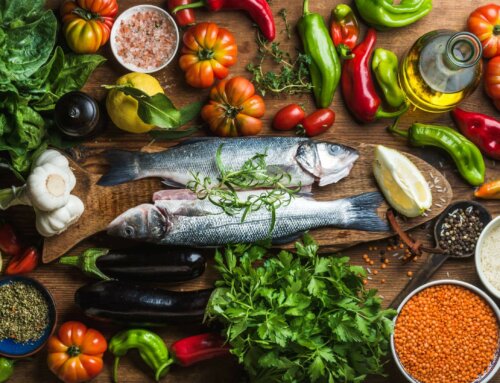My patients always want to talk about food more than any topic relating to diabetes. But their favorite question is “what kind of snacks can I eat?” If you have diabetes, gone are the days of two graham crackers with 4 ounces of skim milk before bedtime.
If done in moderation, here are ten things you should know about how snacking affects you:
- Prevents you from overeating at the next meal.
- Keeps hunger at a minimum between meals.
- Keeps the blood sugar level steady.
- Needed especially when you exercise for an hour or more.
- Is recommended for people who have gastroparesis. They get full or bloated on a complete meal due to delayed gastric emptying.
- May be an answer to help prevent hypoglycemia during the nighttime.
- Can be used to prevent lows when driving for a long period.
- Good when you are on insulin or sulfonylureas and are more at risk for hypoglycemia.
- Is perfect during plane travel when you may not be receiving a meal.
- Is great for type 1 children who are growing and need extra calories between meals and to help prevent hypoglycemia.
Remember, snacks need to be factored into your daily calorie allotment; you are just spreading the calories throughout the day. Measuring out portion sizes is important when snacking. They should not exceed 100-200 calories and contain only one serving of a carbohydrate (15 grams per snack). Stick to no more than two snacks a day. Combine protein, monounsaturated fats, and complex carbohydrates for the best nutrition and satisfaction.
Here are some of my tasty and interesting choices:
- Light Brie, Baby Bel, Alpine lace Swiss, Light Jarlsberg, Mozzarella cheese sticks, Fat free cheddar, mini-Gouda (one choice) in 1 ounce portions with EITHER: half a pear, half an apple, 8 grapes, 12 cherries, 1 cup of cubed cantaloupe, 1 cup of raspberries, or 3/4 cup blueberries are perfect snacks. The calories are appropriate and you get calcium from the cheese for strong bones and teeth yet it is low fat, low sodium and filling. The fruit supplies fiber (insoluble and soluble) to help reduce your cholesterol as well as stabilize blood sugar, Vitamin C for healing, anti-oxidants to boost your immunity, beta carotene, potassium, and folate. The combination of protein, fat and carbohydrates is satisfying and stays with you the longest to avoid a starving sensation at the next meal.
- 3 cups of air-popped popcorn (low sodium) and no butter. Sprinkle with a tablespoon of fresh grated Parmesan cheese for the fat content to keep you less hungry later. If you like it spicy, add a pinch of cayenne pepper; spices have wonderful healing properties. The popcorn has lots of fiber to keep you full and the cheese has calcium. Calcium may also reduce the risk of colon cancer and adenomas. More research is needed.
- Guacamole with low fat, low salt whole grain tortilla chips- Make the guacamole with ½ a tomato, ½ a red onion, 2 tablespoons of lemon juice, a pinch of garlic powder and chopped fresh cilantro with one avocado. Mash together and eat ¼ of a cup with 6 chips. Delicious! Avocados are full of monounsaturated fat, which decreases inflammation and helps keep you satiated.
- A tablespoon of dry unsalted pumpkin or sunflower seeds, or 2 Brazil nuts, 6 walnuts, almonds or 16 pistachio nuts (white and in the shell) mixed with 6 ounces of Greek plain yogurt and 1 tablespoon of fresh berries (seeds and nuts have lots of calories if not in portion size). A mini-parfait with thick and tangy yogurt supplies probiotics and live cultures for enhanced digestion and increased immunity. The nuts have protein and mono-unsaturated fat and help ward off hunger, as well as supplying more fiber and flavonoids. The berries have multiple beneficial qualities. Together, a real treat!
Enjoy snacking in moderation with the right intentions and selections. You will feel better, less hungry and it will help maintain a stable blood sugar!
NOTE: Consult your doctor first to make sure my recommendations fit your special health needs.






Leave A Comment